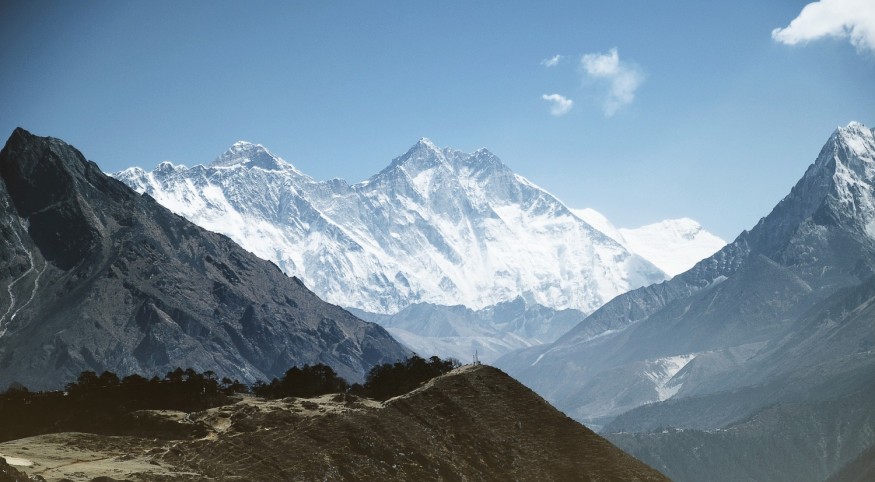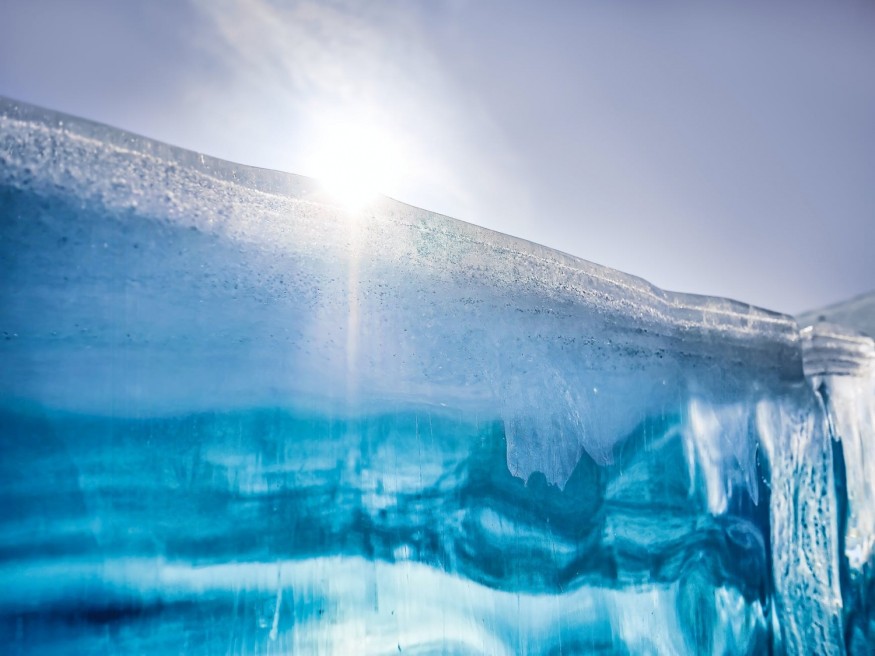According to a University of Maine-led international research team that analyzed data from the world's highest ice core and highest automatic weather stations, the melting and sublimation on Mount Everest's highest glacier as a result of human-induced climate change has reached the point where several decades of accumulation are being lost annually now that ice has been exposed.

The exceptional vulnerability of the high-altitude Himalayan ice masses in fast retreat forewarns of rapidly emerging consequences, which might vary from increased avalanche incidence to diminished glacier stored water capacity, on which more than 1 billion people rely for drinking water and agriculture, Phys.org noted.
According to UMaine climate scientists Mariusz Potocki and Paul Mayewski, Mount Everest expeditions may be ascending over more exposed bedrock as the highest glaciers melt, potentially making the trek more complicated with snow and ice cover continues to reduce in the future decades.
The team's findings are the latest study results from the 2019 National Geographic and Rolex Perpetual Planet Everest Expedition, published in Nature's journal Climate and Atmospheric Science.
The expedition's scientists, including six from the University of Maine's Climate Change Institute, researched environmental changes to better understand how rising global temperatures may affect life on Earth.
According to Mayewski, a glaciologist and director of the University of Maine's Climate Change Institute who was the expedition leader and lead scientist for the Perpetual Planet Everest Expedition, this latest research confirms the heights to which human-caused climate change has reached and serves as a bellwether for other high-mountain glacier systems and the potential impacts as glacier mass declines.
Highlights
The study highlights the critical balance that snow-covered surfaces provide, as well as the "potential for loss throughout high mountain glacier systems as snow cover is depleted by changes in sublimation-passing from a solid to a vapor state-and surface melt driven by climate trends. Everest's highest glacier has served as a sentinel for this delicate balance and has demonstrated that even the roof of the Earth is impacted by anthropogenic source warming," according to the researchers.
The researchers used data from a 10-meter-long ice core and meteorological stations, photogrammetric and satellite photography, and other records to investigate significant mass the timing and source of considerable mass loss on South Col Glacier.
They calculated that current thinning rates are nearing 2 meters of water per year now that the glacier has transitioned from snowpack to ice, losing its capacity to reflect solar radiation and melting at a faster pace, resulting in rapid melting and increasing sublimation.
Related Article : Traces of Plastic Found in Air from the World's Highest Peaks
Large-Scale Study

Once the ice on the South Col Glacier was frequently exposed, it is estimated that the glacier thinned by 55 meters in a quarter-century, a rate more than 80 times quicker than the almost 2,000 years it took to develop the ice on the surface.
According to the researchers, increased total surface ice mass loss in the region-the shift from permanent snowpack to majority ice cover-could have been induced by climate change during the 1950s, with sublimation aided by rising air temperatures.
Since the late 1990s, climate change has greatly influenced glaciers.
The region's intense insolation implies that ablation--the loss of surface material due to melting or vaporization--can increase by a factor of more than 20 if snow cover gives way to ice, model simulations suggest.
While rising air temperatures were the primary sublimation source, falling relative humidity and stronger winds also played a role.
"Climate forecasts for the Himalaya indicate continuous warming and glacier mass loss, and even the summit of Everest is influenced by human source warming," says Potocki, a glaciochemist and doctorate candidate at the Climate Change Institute who collected the world's tallest ice core.
Collaborative Effort
Tom Matthews of Loughborough University, L. Baker Perry of Appalachian State University, Margit Schwikowski of the Paul Scherrer Institut, Alexander M. Tait of the National Geographic Society, Elena Korotkikh, Heather Clifford, and Sean Birkel of the University of Maine, Shichang Kang of the Chinese Academy of Sciences, Tenzing Chogyal Sherpa of the International Centre for Integrated Mountain Development in Kathmandu, Nepal, and Praveen Kumar Singh were part of the team.
They are an international, multidisciplinary team of scientists, climbers, and storytellers led by the National Geographic Society and Tribhuvan University, and supported by Rolex, that conducted the most comprehensive single scientific expedition to Mount Everest in history, which was led by the National Geographic Society and Tribhuvan University.
Goal
The expedition team set up the world's highest weather stations (at 8,430 and 7,945 meters), collected the world's highest ice core (at 8,020 meters), conducted comprehensive biodiversity surveys at multiple elevations, completed the world's highest elevation helicopter-based lidar scan, expanded the elevation records for high-dwelling species, and documented the history of the mountain's glaciers.
Two of the expedition's three Guinness World Records have just been set: the highest altitude ice core and the highest altitude weather station on land.
Also Read : Ocean Temperature Reaches "Point of No Return" as Climate Change Creates Irreversible Scenario
For Environmental News, don't forget to follow Nature World News!
© 2025 NatureWorldNews.com All rights reserved. Do not reproduce without permission.





